Product Overview
† commercial product
Hydrochlorothiazide (HCTZ) and triamterene are diuretics used together in an oral preparation to treat hypertension or edema. Hydrochlorothiazide is a thiazide diuretic, while triamterene is a potassium-sparing diuretic. In hypertension, diuretics are often used as initial therapy, either alone or in combination with other agents. Unlike the loop diuretics, the efficacy of this diuretic combination is diminished in patients with renal insufficiency. When marketed in 1965, Dyazide® was the first product to combine hydrochlorothiazide and triamterene. The original Dyazide® capsules, containing HCTZ 25 mg and TM 50 mg, had an oral bioavailability of approximately 50% compared to the reference standard suspension. Tablet formulations containing HCTZ 50 mg with TM 75 mg (i.e., Maxzide®), and HCTZ 25 mg with TM 37.5 mg (i.e., Maxzide®-25) were approved on 10/22/84 and 5/13/88, respectively. Maxzide® demonstrated improved bioavailability compared to the original Dyazide® product. On 3/3/94, Dyazide® capsules were reformulated. The current formulation of Dyazide® capsules (HCTZ 25 mg with TM 37.5 mg), has an improved relative bioavailability that is comparable to the reference standard suspension. Bioavailability data comparing Maxzide®-25 mg with the current Dyazide® formulation are not available.
Hydrochlorothiazide (HCTZ)-triamterene products exhibit antihypertensive and diuretic actions by increasing the excretion of sodium. Triamterene counteracts potassium loss caused by hydrochlorothiazide.
Hydrochlorothiazide
Thiazide diuretics increase the excretion of water by inhibiting the reabsorption of sodium and chloride ions at the distal renal tubule. The natriuretic effects are accompanied by a secondary loss of potassium and bicarbonate which can cause a mild hypokalemic, hypochloremic, metabolic alkalosis. Thiazides also decrease the elimination of calcium and uric acid. Thiazides diuretics usually do not affect normal blood pressure. When chronically administered, diuretics decrease peripheral vascular resistance. The exact mechanism responsible for the lowered peripheral resistance is not known; however, excretion of urinary sodium by the kidneys is required to achieve blood pressure reduction. Initially, diuretics lower blood pressure by decreasing cardiac output, plasma volume and extracellular fluid volume. Cardiac output eventually returns to normal, plasma and extracellular fluid values return to slightly less than normal, but peripheral vascular resistance is reduced, resulting in lower blood pressure. Thiazide diuretics also decrease the glomerular filtration rate, which contributes to the drug’s lower efficacy in patients with renal impairment. The changes in plasma volume induce an elevation in plasma renin activity and aldosterone secretion which contributes to the potassium losses associated with thiazide diuretics. In general, diuretics can worsen LVH, glucose tolerance, and lipid abnormalities.
Triamterene
Triamterene exhibits weak diuretic effects by directly inhibiting the reabsorption of sodium in the distal renal tubule in exchange for potassium and hydrogen. By inhibiting the distal tubular exchange mechanism, triamterene maintains or increases the sodium excretion and reduces the excess loss of potassium, hydrogen, and chloride ions induced by hydrochlorothiazide. Triamterene acts independently of aldosterone and does not inhibit carbonic anhydrase. Like hydrochlorothiazide, triamterene may reduce glomerular filtration and renal plasma flow.
This medicine is a strong water pill. Sometimes important elements (potassium) in the blood can be increased. The risk is greatest in people with diabetes, kidney disease, serious illness and/or in the elderly. Your healthcare provider will follow you closely to change the dose to match your body’s needs.
Your health care provider needs to know if you have any of these conditions: high potassium levels; diabetes; immune system problems, like lupus; kidney disease or stones; liver disease; small amount of urine or difficulty passing urine; an unusual or allergic reaction to triamterene, hydrochlorothiazide, sulfa drugs, other medicines, foods, dyes, or preservatives; pregnant or trying to get pregnant; breast-feeding; taking another water pill that prevents potassium loss. If you are taking dofetilide. Tell healthcare provider if you are allergic to any medicine. Make sure to tell about the allergy and how it affected you. This includes telling about rash; hives; itching; shortness of breath; wheezing; cough; swelling of face, lips, tongue, or throat; or any other symptoms involved. If you have a sulfonamide (“sulfa”) allergy, talk with healthcare provider.
Thiazide diuretics have been associated with a slight increase in serum cholesterol and triglyceride concentrations. Data from long-term studies, however, suggest diuretic-induced cholesterol changes are not clinically significant and do not contribute to coronary heart disease risk.[3]
Thiazide diuretics, like hydrochlorothiazide; triamterene, are contraindicated in patients with known thiazide diuretic hypersensitivity. According to the manufacturer, hydrochlorothiazide is specifically contraindicated in patients with sulfonamide hypersensitivity. Hypersensitivity reactions may occur in patients with or without a history of allergy or bronchial asthma; however, reactions are more likely to occur in patients with such history. Although thiazide diuretics are sulfonamide derivatives, sulfonamide cross-sensitivity has been rarely documented.[4][5][6] Until further data are available, thiazide diuretics should be used with caution in patients with sulfonamide hypersensitivity. Thiazide diuretics do not contain the N4-aromatic amine or the N1-substituent which are present in sulfonamide antibiotics.[7] Non-arylamine sulfonamide derivatives, such as thiazide diuretics, have been proposed to have a lower risk of allergic reactions in patients with sulfonamide allergy, presumably due to lack of an arylamine group at the N4 position (a proposed structural site of action for sulfonamide allergy).[6][7] One large retrospective cohort study has reported that in patients with the presence of an allergic reaction after exposure to a sulfonamide antibiotic, 9.9% had an allergic reaction after receiving a non-antibiotic sulfonamide derivative, while in patients who lacked an allergic reaction after sulfonamide antibiotic exposure, 1.6% had an allergic reaction after administration of a non-antibiotic sulfonamide derivative (adjusted odds ratio 2.8; 95% CI, 2.1-3.7).[8] A causal relationship between sulfonamide hypersensitivity and allergic reactions with non-arylamine sulfonamide derivatives has not been definitively established and remains controversial.[4][5][6][7] In general, patients with a documented sulfonamide allergy are considered to be predisposed for development of allergic drug reactions.[7][8] Also, patients with a history of sulfonamide hypersensitivity or penicillin hypersensitivity who receive hydrochlorothiazide may also be at increased risk for the development of an idiosyncratic reaction resulting in transient myopia and acute angle-closure glaucoma. Discontinue hydrochlorothiazide promptly if this reaction occurs (see Adverse Reactions).[9]
Patients receiving diuretics, like hydrochlorothiazide; triamterene, should be monitored closely for clinical signs of fluid or electrolyte imbalance. Triamterene is contraindicated in patients with hyperkalemia (potassium levels greater than 5.5 mEq/L) or in those receiving other potassium-sparing agents. Patients receiving triamterene should not receive potassium supplementation or increase their dietary intake of potassium unless they have refractory hypokalemia; serum potassium, creatinine, and BUN levels should be monitored. Triamterene-induced hyperkalemia can cause life-threatening cardiac arrhythmias and is more likely to occur in patients with impaired renal function, diabetes mellitus, or in geriatric patients; these patients should have periodic serum electrolyte, creatinine, and BUN levels monitored. Triamterene should be used with caution in these patients. Triamterene is also contraindicated in patients with anuria or azotemia or any renal disease associated with severe renal impairment (CrCl < 10 ml/min) or renal failure. Hydrochlorothiazide should be used cautiously in patients with renal disease or renal impairment; hypovolemia can precipitate azotemia in these patients. Hydrochlorothiazide is considered ineffective when the creatinine clearance is less than 30 ml/minute. Hyperglycemia, impaired glucose tolerance, and glycosuria can also occur during hydrochlorothiazide therapy, and blood and/or urine glucose levels should be assessed more carefully in patients with diabetes mellitus.[10] Patients with pre-existing hypovolemia or hypotension should have their condition corrected before diuretics, like hydrochlorothiazide; triamterene, are initiated. Orthostatic hypotension may occur during treatment with thiazide diuretics.[11] Orthostatic hypotension can be exacerbated by concurrent use of alcohol, narcotics, or antihypertensive drugs (see Drug Interactions). Excessive hypotension during thiazide diuretic therapy can result in syncope. An increased risk of falls has been reported for elderly patients receiving thiazide diuretics.[12][13] The antihypertensive effects of thiazides may be enhanced in other patients predisposed for orthostatic hypotension, including the post-sympathectomy patient. Patients with other severe electrolyte imbalances (e.g., hyponatremia, hypercalcemia) should have their condition corrected before diuretics, like hydrochlorothiazide; triamterene, are initiated. Preexisting hyponatremia may be worsened during therapy with triamterene and hydrochlorothiazide. Elderly patients are more susceptible to dilutional hyponatremia induced by thiazide diuretics. Hydrochlorothiazide can increase serum calcium concentrations and should be used with caution in patients with hypercalcemia. Patients with significant acid/base imbalance should have their condition corrected before diuretics, like hydrochlorothiazide; triamterene, are initiated. Close monitoring of the acid-base status is required in debilitated patients or severely ill patients in whom respiratory acidosis or metabolic acidosis may occur (e.g., cardiopulmonary disease or uncontrolled diabetes). These patients are at a higher risk for developing sudden metabolic acidosis or respiratory acidosis, with resultant rapid increases in serum potassium concentrations that could be exacerbated by potassium-sparing diuretic therapy. Thiazide diuretics, like hydrochlorothiazide; triamterene, have been reported to cause pancreatitis. They should be used with caution in patients with a history of pancreatitis. Hydrochlorothiazide; triamterene combination products are classified in FDA pregnancy risk category C. The safety of hydrochlorothiazide and triamterene administration during pregnancy has not been established, so the combination product should be administered to pregnant women only when absolutely necessary (the potential benefits to the mother significantly outweigh the potential risk to the fetus). The pregnancy risk factor for thiazide diuretics increases to category D for those pregnant patients with reduced uteroplacental perfusion (e.g., preeclampsia or intrauterine growth retardation (IUGR).[14][15] In general, the bulk of the evidence does not indicate that thiazide diuretics are teratogenic in the 1st trimester, although, many experts limit their use to the 2nd and 3rd trimesters.[15] Neonatal thrombocytopenia has been reported after maternal use of thiazide diuretics near term; at term, thiazide diuretics have been reported to cross the placenta. Potential risks from thiazide use include electrolyte imbalances in the newborn, pancreatitis, jaundice, or neonatal complications resulting from such maternal complications such as hyperglycemia, electrolyte imbalance, or hypotension. Triamterene also crosses the placenta. Triamterene is a weak folic acid antagonist and can contribute to the development of megaloblastic anemia in pregnant patients with depleted stores of folic acid. Maternal folic acid deficiency has been associated with spinal column defects in the fetus. In general, diuretics are contraindicated in pregnant women with mild edema that is unresponsive to supportive measures (elevation of the lower extremities and the use of support hose) and edema which is not associated with more severe disease. Diuretics do not prevent the development of toxemia of pregnancy. According to the manufacturer, thiazides and triamterene in combination have not been studied during lactation. It is not known whether triamterene distributes into human breast milk; but it does appear in animal milk. Thiazide diuretics distribute into breast milk. The manufacturer recommends discontinuation of breast-feeding if hydrochlorothiazide; triamterene is used by the mother.[16] The American Academy of Pediatrics (AAP) has not evaluated triamterene; however, the AAP regards the use of thiazide diuretics, including hydrochlorothiazide as usually compatible with breast-feeding. The AAP also considers spironolactone, a potasium sparing diuretic that may represent a preferable alternative, as usually compatible with breast feeding.[17] Consider the benefits of breast-feeding, the risk of potential infant drug exposure, and the risk of an untreated or inadequately treated condition. If a breast-feeding infant experiences an adverse effect related to a maternally ingested drug, healthcare providers are encouraged to report the adverse effect to the FDA. Safe and effective use of hydrochlorothiazide; triamterene in neonates, infants, children, and adolescents has not been established. Due to the need to individualize drug doses in pediatric patients, fixed-dose combination products are generally to be avoided. In addition, thiazides, like hydrochlorothiazide; triamterene, should be avoided in neonates with hyperbilirubinemia. Thiazide-induced hyperbilirubinemia is greater in this patient population. Triamterene or hydrochlorothiazide-induced fluctuations in serum electrolyte concentration (including potassium loss in patients with hepatic cirrhosis) can occur and precipitate hepatic encephalopathy in susceptible patients. In addition, triamterene is a weak folic acid antagonist and can contribute to the development of megaloblastic anemia in patients with depleted stores of folic acid such as occur in hepatic cirrhosis. Therefore, the drug should be used with caution in patients with hepatic disease. In addition, thiazides, like hydrochlorothiazide; triamterene, should be avoided in neonates with jaundice. Thiazide-induced hyperbilirubinemia is greater in this patient population. Triamterene has been reported to be a constituent of renal stones in patients receiving the drug and therefore must be used with caution in patients predisposed to nephrolithiasis. Thiazide diuretics have been reported to reduce the clearance of uric acid. Caution should also be used when triamterene and hydrochlorothiazide is administered to patients with gout or hyperuricemia. Hydrochlorothiazide has been reported to activate or exacerbate systemic lupus erythematosus (SLE); therefore, hydrochlorothiazide; triamterene should be used cautiously in this population. Photosensitivity has been reported with thiazide diuretics, like hydrochlorothiazide; triamterene.[18] Patients should avoid excessive sunlight (UV) exposure and therapy should be discontinued if phototoxicity occurs. This list may not include all possible contraindications.
Possible interactions include: cyclosporine; heart medicines like ACE inhibitors, digoxin, dofetilide, eplerenone, angiotensin II antagonists, and medicines for blood pressure; lithium; medicines for diabetes; medicines for inflammation like indomethacin; medicines that relax muscles for surgery; other diuretics; potassium; sotalol; tacrolimus. This list may not describe all possible interactions. Give your health care provider a list of all the medicines, herbs, non-prescription drugs, or dietary supplements you use. Also tell them if you smoke, drink alcohol, or use illegal drugs. Some items may interact with your medicine. If you are taking this medicine and have high blood pressure, talk with healthcare provider before using over-the-counter products that may increase blood pressure. These include cough or cold remedies, diet pills, stimulants, ibuprofen or like products, and certain natural products or supplements. Avoid alcohol (includes wine, beer, and liquor). Watch for gout attacks. You can get sunburned more easily. Avoid sun, sunlamps, and tanning beds. Use sunscreen; wear protective clothing and eyewear. Tell healthcare provider if you are pregnant or plan on getting pregnant. Tell healthcare provider if you are breast-feeding.
NOTE: Triamterene is a substrate for CYP1A2.[19] Theoretically, the metabolism of triamterene may be affected by drugs that are inhibitors or inducers of CYP1A2.
Triamterene should not be used concomitantly with other potassium-sparing diuretics (e.g., amiloride or spironolactone) or with eplerenone because of the increased risk of developing hyperkalemia. Simultaneous use of cyclosporine or tacrolimus with triamterene can also increase the risk of hyperkalemia, and is generally not recommended. In addition, ACE inhibitors, angiotensin II receptor antagonists, trimethoprim, heparin, potassium supplements, potassium-containing medications (e.g., penicillin G potassium), and any substance containing potassium salts (e.g., blood, salt substitutes, low-salt milk) can increase the risk of hyperkalemia developing in patients receiving amiloride, especially in the presence of renal impairment (renal disease, elderly patients). These agents should be used with caution and serum potassium levels monitored when the substances are concurrently administered with triamterene.
The simultaneous administration of thiazide diuretics and calcium salts or calcium carbonate may lead to hypercalcemia. Thiazides cause a decrease in renal tubular excretion of calcium as well as increase in distal tubular reabsorption. Moderate increases in serum calcium have been seen during the treatment with thiazides; if calcium salts are used concomitantly, careful monitoring of serum calcium in recommended.[20]
Lithium clearance can be decreased in patients receiving diuretics; concomitant administration could result in lithium toxicity.
Triamterene can reduce the renal clearance of amantadine, with subsequent increased serum concentrations and possible toxicity. This interaction has been reported with a combination product of hydrochlorothiazide and triamterene. Since it is unclear which component was responsible for the interaction, caution should be exercised when administering either drug concurrently with amantadine.
Thiazide diuretics[21] and triamterene[22] can decrease the hypoglycemic effects of antidiabetic agents by producing an increase in blood glucose levels. It appears that the effects of thiazide diuretics on glycemic control are dose-related and low doses can be instituted without deleterious effects on glycemic control.[21] In addition, diuretics reduce the risk of stroke and cardiovascular disease in patients with diabetes.[23] However, patients taking antidiabetic agents should be monitored for changes in blood glucose control if such diuretics are added or deleted. Dosage adjustments may be necessary. Furthermore, triamterene, when used concomitantly with metformin, may increase the risk of lactic acidosis. Triamterene may decrease metformin elimination by competing for common renal tubular transport systems. Careful patient monitoring and dose adjustment of metformin is recommended during concurrent triamterene therapy.
NSAIDs can cause sodium and fluid retention as well as increase peripheral vascular resistance. NSAIDs can decrease the diuretic, natriuretic, and antihypertensive actions of diuretics, possibly through inhibition of renal prostaglandin synthesis. Concomitant administration of NSAIDs with diuretics can also increase the risk for renal insufficiency secondary to decreased renal blood flow. Patients should be monitored for changes in the effectiveness of their diuretic therapy and for signs and symptoms of renal impairment. Significant renal impairment has occurred when triamterene and indomethacin have been used together. Among NSAIDs, indomethacin, naproxen, and piroxicam may have the greatest pressor effect, while the effects of sulindac and nabumetone may be significantly less. Concomitant use of NSAIDs and potassium-sparing drugs, such as triamterene, can cause hyperkalemia.
Concomitant use of medicines with potential to alter renal perfusion or function such as hydrochlorothiazide; triamterene may increase the risk of acute phosphate nephropathy in patients receiving sodium phosphate monobasic monohydrate; sodium phosphate dibasic anhydrous.[24][25]
Salicylates can increase the risk of renal toxicity in patients receiving diuretics because salicylates inhibit renal prostaglandin synthesis, which can lead to fluid retention and increased peripheral vascular resistance. Concomitant use of salicylates and triamterene may cause hyperkalemia.
Drugs that are actively secreted via cationic tubular secretion (e.g., amiloride) should be co-administered with caution with dofetilide since they could increase dofetilide plasma concentrations via potential competition for renal cationic secretion. Increased dofetilide plasma concentrations may be associated with proarrhythmias. In addition, drug-induced hypokalemia secondary to hydrochlorothiazide may increase the risk of torsade de pointes during dofetilide therapy; monitor serum potassium levels closely. In a population pharmacokinetic analysis of plasma dofetilide concentrations, the mean dofetilide clearance of dofetilide was 16% lower in patients on thiazide diuretics.
Hydrochlorothiazide may result in hypokalemia and/or hypomagnesemia and increase the risk of drug-induced proarrhythmias (including torsade de pointes) for drugs such as arsenic trioxide, bepridil, cardiac glycosides, levomethadyl, mibefradil, and sotalol. Potassium levels should be within the normal range prior and during administration of these agents. In the absence of electrolyte imbalances, these agents can be used together safely.
Hawthorn, Crataegus laevigata may lower peripheral vascular resistance. Hawthorn use in combination with antihypertensive agents may lead to additional reductions in blood pressure in some individuals. Patients receiving hawthorn concurrently with antihypertensive medications should receive periodic blood pressure monitoring.
Drug interactions with Horse chestnut, Aesculus hippocastanum are not well documented. Escin, an active saponin in the horse chestnut seed, appears to have weak diuretic activity, but the exact mechanism is not clear.[26] The effect appears to be dose-dependent and may be additive with traditional diuretics.
Enhanced hyperglycemia is possible during concurrent use of diazoxide and thiazide diuretics.
Concomitant administration of hydrochlorothiazide to patients receiving nondepolarizing neuromuscular blockers can cause prolonged neuromuscular blockade due to hydrochlorothiazide-induced hypokalemia. Serum potassium concentrations should be determined and corrected (if necessary) prior to initiation of neuromuscular blockade therapy.
Cholestyramine, an anion-exchange resin, may bind to acidic drugs, such as the thiazide diuretics in the GI tract, and decrease their absorption and therapeutic effectiveness. It is recommended that thiazides be administered at least 4 hours before cholestyramine. Although to a lesser extent than cholestyramine, colestipol also has been shown to inhibit the GI absorption and therapeutic response of thiazide diuretics. Administering the diuretic dose at least 2 hours before colestipol has been suggested.
A manufacturer of topical tretinoin states that tretinoin, ATRA should be administered with caution in patients who are also taking drugs known to be photosensitizers, such as thiazide diuretics, as concomitant use may augment phototoxicity. Patients should take care and use proper techniques to limit sunlight and UV exposure of treated areas.[27]
The manufacturer states that tazarotene should be administered with caution in patients who are also taking drugs known to be photosensitizers, such as thiazide diuretics, as concomitant use may augment phototoxicity.[28][29] Patients should take care and use proper techniques to limit sunlight and UV exposure of treated areas.[28][29]
Thiazide diuretics may cause photosensitivity[30] and may increase the photosensitization effects of photosensitizing agents used in photodynamic therapy. Prevention of photosensitivity includes adequate protection from sources of UV radiation (e.g., avoiding sun exposure and tanning booths) and the use of protective clothing and sunscreens on exposed skin.[30]
Ethanol, barbiturates, or opiate agonists may potentiate orthostatic hypotension when used concurrently with hydrochlorothiazide.
Diuretics can cause decreased arterial responsiveness to vasopressor amines (e.g., norepinephrine), but the effect is not sufficient to preclude their coadministration.
Additive hypokalemia may occur when non-potassium sparing diuretics (loop diuretics or thiazide diuretics) are coadministered with other drugs with a significant risk of hypokalemia (e.g., amphotericin B, cisplatin, corticosteroids, corticotropin, ACTH, glycyrrhizin (found in licorice).[31]
Hypokalemia and/or ECG changes associated with loop diuretics or thiazide diuretics can be acutely worsened by beta-agonists, especially when the recommended dose of the beta-agonist is exceeded. Although the clinical significance of these effects is unknown, use caution when coadministering beta-agonists with non-potassium sparing diuretics.
The occurrence of hypersensitivity reactions may be increased in patients with renal impairment who receive allopurinol and thiazide diuretics in combination.
Drospirenone has antimineralocorticoid effects and may increase serum potassium. The concurrent use of potassium-sparing diuretics may increase the risk of hyperkalemia, especially in the presence of renal impairment. Monitor serum potassium if triamterene is used concurrently with drospirenone; ethinyl estradiol (Yasmin), particularly during the 1st month of treatment.
Thiazide diuretics may increase the risk of hypokalemia if used concurrently with methazolamide. Monitor serum potassium levels to determine the need for potassium supplementation and/or alteration in drug therapy. There may also be an additive diuretic or hyperuricemic effect.
Ephedra, Ma huang can antagonize all types of antihypertensive agents. Blood pressure should be monitored closely in patients using antihypertensive agents with ephedra.
The use of saline laxatives (e.g., magnesium citrate) with potassium-sparing diuretics may interfere with the potassium-sparing effect of such diuretics due to excess fluid and electrolyte loss. In addition, potassium-sparing diuretics may interfere with the kidneys ability to regulate magnesium concentrations; long-term use of potassium-sparing diuretics has been found to increase renal tubular reabsorption of magnesium which may cause hypermagnesemia, especially in patients with renal insufficiency.
Memantine is excreted in part by renal tubular secretion. Competition of memantine for excretion with other drugs that are also eliminated by tubular secretion could result in elevated serum concentrations of one or both drugs. Triamterene is a drug excreted in part by renal tubular secretion. At normal doses, the combination of hydrochlorothiazide, HCTZ; triamterene did not alter the bioavailability of memantine at steady state. Memantine did not affect the bioavailability of triamterene, but reduced the bioavailability of hydrochlorothiazide, HCTZ by roughly 20%; the clinical significance of this pharmacokinetic interaction, if any, is unknown.
Both entecavir and triamterene are secreted by active tubular secretion.[32][33] In theory, coadministration of entecavir with triamterene may increase the serum concentrations of either drug due to competition for the drug elimination pathway. The manufacturer of entecavir recommends monitoring for adverse effects when these drugs are coadministered.
Additive hypotensive effects may be seen when monoamine oxidase inhibitors (MAOIs) are combined with antihypertensives.[34][35] Careful monitoring of blood pressure is suggested during concurrent therapy of MAOIs with diuretics. Patients should be instructed to rise slowly from a sitting position, and to report syncope or changes in blood pressure or heart rate to their health care provider during concurrent use of an MAOI and hydrochlorothiazide, HCTZ; triamterene.
Use caution when coadministering amiodarone with drugs which may induce hypokalemia and/or hypomagnesemia including thiazide diuretics.[36][37] Since antiarrhythmic drugs may be ineffective or may be arrhythmogenic in patients with hypokalemia, any potassium or magnesium deficiency should be corrected before and during amiodarone therapy.[38]
Both thiazide diuretics and carbamazepine are associated with hyponatremia. Coadministration may result in an additive risk of developing hyponatremia. When concurrent therapy with a thiazide diuretic and carbamazepine is necessary, monitor patients for hyponatremia.[39][40]
Hydrochlorothiazide, HCTZ may decrease the renal clearance of fluconazole. Coadministration of fluconazole 100 mg PO and hydrochlorothiazide 50 mg PO for 10 days in normal volunteers (n=13) resulted in a significant increase in fluconazole AUC and Cmax compared to fluconazole given alone. There was a mean +/- SD increase in fluconazole AUC and Cmax of 45 +/- 31% and 43 +/- 31%, respectively. These changes are attributed to a mean +/- SD reduction in fluconazole renal clearance of 30% +/- 12%.[41]
A pharmacokinetic drug interaction study evaluated hydrochlorothiazide, HCTZ 25 mg PO once daily and topiramate (96 mg PO twice a day). Topiramate Cmax increased by 27% and AUC increased by 29% when HCTZ was added to topiramate. The clinical significance of this change is unknown; however, the addition of HCTZ to topiramate therapy may require a reduction in the topiramate dose. Alternatively, the discontinuation of HCTZ therapy may require a dose increase in topiramate. The clinician should be aware of the potential for this interaction and monitor the patient accordingly. The steady-state pharmacokinetics of HCTZ were not altered to any significant degree.[42]
This list may not include all possible drug interactions.
Change in sex drive or performance; dry mouth; headache; stomach upset. This list may not describe all possible side effects. Call your doctor for advice..
Triamterene-induced hyperkalemia can cause atrial fibrillation, supraventricular tachycardia (SVT) and life-threatening cardiac arrhythmias such as ventricular fibrillation, AV block, and ventricular tachycardia. Respiratory or metabolic acidosis also may be associated with rapid elevations in serum potassium levels. Hyperkalemia is more likely to occur in patients with renal insufficiency, diabetes, or in geriatric patients. Signs and symptoms of hyperkalemia include reduced muscular strength, numbness, fatigue, flaccid paralysis of the extremities, sinus bradycardia, shock, and ECG changes. Geriatric patients, severely ill patients, or patients with impaired renal function who are receiving triamterene therapy are particularly at risk for developing hyperkalemia, and periodic serum electrolyte, creatinine, and BUN determinations should be made. If hyperkalemia occurs, hydrochlorothiazide; triamterene should be discontinued immediately, and specific measures should be taken to reduce serum potassium levels.[16]
Patients receiving hydrochlorothiazide and triamterene should be monitored closely for signs of electrolyte imbalance including hyperkalemia, hyponatremia, hypokalemia, hypomagnesemia, and hypochloremia. Determination of serum electrolytes to identify possible electrolyte imbalance should be performed at appropriate intervals depending on the clinical situation. Hypokalemia is one of the most common adverse effects when thiazide diuretics are administered alone and can lead to cardiac arrhythmias. However, combining triamterene with hydrochlorothiazide helps to counteract the potassium losses; potassium levels should be monitored with combination therapy. Dilutional hyponatremia is possible in edematous patients during hot weather; water restriction is the appropriate therapy for these cases, except for the rare instances when hyponatremia is life-threatening, in which case sodium replacement may be necessary. Sodium replacement is the treatment of choice in cases of actual salt depletion. Thiazides also can decrease urinary calcium excretion, resulting in hypercalcemia. In addition, in a few patients receiving chronic thiazide therapy, pathological changes in the parathyroid glad with hypercalcemia and hypophosphatemia have been observed. Thiazides should be discontinued before testing for parathyroid function.[16]
Hydrochlorothiazide can produce glycosuria, hyperglycemia, and diabetes mellitus. In a postmarketing surveillance report involving 70,898 patients receiving hydrochlorothiazide; triamterene, hyperglycemia was reported in 0.02% of patients.[43] Blood and/or urine glucose concentrations should be assessed more carefully in diabetic patients receiving hydrochlorothiazide; triamterene. Insulin requirements in diabetic patients may be increased, decreased, or unchanged.[16]
Thiazide diuretics, like hydrochlorothiazide; triamterene, are known to cause hyperuricemia; acute gout may also be precipitated.[16] Thiazide diuretics appear to interfere with proximal tubule secretion of uric acid since thiazides are also organic acids and they compete with uric acid for binding at this site. Since thiazides reduce the clearance of uric acid, patients with gout or hyperuricemia may have exacerbations of their disease. In a postmarketing surveillance report involving 70,898 patients receiving hydrochlorothiazide; triamterene, gout or hyperuricemia developed in 0.06% of total enrolled patients (receiving no concomitant medications) and was responsible for therapy discontinuation 0.4% of patients who discontinued treatment.[43]
While their incidence is rare, agranulocytosis, aplastic anemia, hemolytic anemia, leukopenia, and thrombocytopenia have been reported with thiazide diuretic therapy, like hydrochlorothiazide; triamterene. Because triamterene is a weak folic acid antagonist, megaloblastic anemia has been reported in patients with decreased folic acid stores.[16]
Adverse GI effects reported during triamterene and/or hydrochlorothiazide therapy include abdominal pain, anorexia, appetite disturbance, dysgeusia, gastric irritation, cramps, constipation, nausea, vomiting, sialadenitis, xerostomia (dry mouth), and diarrhea. Nausea/vomiting can be reduced by administering the drug after meals but can also indicate electrolyte imbalance. Elevated hepatic enzymes and jaundice have been reported in patients taking hydrochlorothiazide; triamterene. Thiazides have also been reported to cause pancreatitis.[16]
Adverse nervous system effects reported in patients receiving triamterene and hydrochlorothiazide therapy include headache, weakness, fatigue, drowsiness, insomnia, depression, anxiety, restlessness, dizziness, paresthesias, vertigo, and . Muscular weakness may be a sign of triamterene-induced hyperkalemia.[16]
Adverse renal effects reported with triamterene and hydrochlorothiazide include azotemia, acute interstitial nephritis, reversible elevated creatinine and BUN concentrations, and acute renal failure (unspecified). These effects have occurred mainly in patients with preexisting renal disease. Nephrolithiasis has been reported with stones composed of triamterene in association with other calculus materials. Urine discoloration also has been reported with the use of hydrochlorothiazide; triamterene.[44]
Due to the diuretic action of triamterene and hydrochlorothiazide, polyuria can be troublesome for some patients during therapy.
Hypercholesterolemia and/or hypertriglyceridemia have been associated with thiazide diuretic therapy, like hydrochlorothiazide; triamterene. Although elevations in total cholesterol concentrations of 8% can negate the protection against coronary heart disease provided by a 5 mmHg reduction in blood pressure,[45] data from long-term studies suggest diuretic-induced cholesterol changes are not clinically significant and do not contribute to coronary heart disease risk. After approximately one year of treatment, total serum cholesterol concentrations will subside to baseline or lower, suggesting diuretic-induced cholesterol changes are not a significant coronary heart disease risk factor.[3]
Orthostatic hypotension can occur during hydrochlorothiazide; triamterene therapy and can be exacerbated by ethanol, opiate agonists, or antihypertensive drugs. Excessive hypotension can result in syncope. Although infrequent with low doses of thiazide diuretics, complications of diuretic therapy may include intravascular volume depletion (hypovolemia).[46] Sinus tachycardia, dyspnea, and chest pain (unspecified) also have been reported with the use of hydrochlorothiazide; triamterene.[44]
Thiazide diuretics have been associated with intrahepatic cholestatic jaundice.[16] Caution should be used when thiazides, such as HCTZ; triamterene, are administered to jaundiced infants due to the risk of hyperbilirubinemia.
Anaphylactoid reactions, fever, and pneumonitis have been reported with the use of hydrochlorothiazide; triamterene.[44] Adverse dermatologic reactions to thiazide diuretics, such as hydrochlorothiazide; triamterene, are uncommon but may occur. These reactions include purpura, photosensitivity, rash (unspecified), alopecia, urticaria, subacute cutaneous lupus-like symptoms, erythema multiforme including Stevens-Johnson syndrome, exfoliative dermatitis including toxic epidermal necrolysis (TEN), necrotizing angiitis (vasculitis, cutaneous vasculitis) and polyarteritis nodosa.
Adverse effects reported with hydrochlorothiazide and triamterene therapy include impotence (erectile dysfunction), muscle spasm, and muscle cramps.[44]
Hydrochlorothiazide; triamterene may result in ophthalmic adverse reactions. Hydrochlorothiazide, a sulfonamide, can cause an idiosyncratic reaction, resulting in transient myopia and acute angle-closure glaucoma. Symptoms include acute onset of decreased visual acuity or ocular pain and typically occur within hours to weeks of drug initiation. Untreated acute angle-closure glaucoma can lead to permanent vision loss. Discontinue hydrochlorothiazide as rapidly as possible and consider prompt medical or surgical treatment if the ocular hypertension remains uncontrolled.[9] Transient blurred vision and xanthopsia have also been reported during hydrochlorothiazide monotherapy.[16]
This list may not include all possible adverse reactions or side effects. Call your health care provider immediately if you are experiencing any signs of an allergic reaction: skin rash, itching or hives, swelling of the face, lips, or tongue, blue tint to skin, chest tightness, pain, difficulty breathing, wheezing, dizziness, red, a swollen painful area/areas on the leg.
Hydrochlorothiazide; triamterene combination products are classified in FDA pregnancy risk category C. The safety of hydrochlorothiazide and triamterene administration during pregnancy has not been established, so the combination product should be administered to pregnant women only when absolutely necessary (the potential benefits to the mother significantly outweigh the potential risk to the fetus). The pregnancy risk factor for thiazide diuretics increases to category D for those pregnant patients with reduced uteroplacental perfusion (e.g., preeclampsia or intrauterine growth retardation (IUGR).[14][15] In general, the bulk of the evidence does not indicate that thiazide diuretics are teratogenic in the 1st trimester, although, many experts limit their use to the 2nd and 3rd trimesters.[15] Neonatal thrombocytopenia has been reported after maternal use of thiazide diuretics near term; at term, thiazide diuretics have been reported to cross the placenta. Potential risks from thiazide use include electrolyte imbalances in the newborn, pancreatitis, jaundice, or neonatal complications resulting from such maternal complications such as hyperglycemia, electrolyte imbalance, or hypotension. Triamterene also crosses the placenta. Triamterene is a weak folic acid antagonist and can contribute to the development of megaloblastic anemia in pregnant patients with depleted stores of folic acid. Maternal folic acid deficiency has been associated with spinal column defects in the fetus. In general, diuretics are contraindicated in pregnant women with mild edema that is unresponsive to supportive measures (elevation of the lower extremities and the use of support hose) and edema which is not associated with more severe disease. Diuretics do not prevent the development of toxemia of pregnancy.
According to the manufacturer, thiazides and triamterene in combination have not been studied during lactation. It is not known whether triamterene distributes into human breastmilk, but it does appear in animal milk. Thiazide diuretics distribute into breast milk. The manufacturer recommends discontinuation of breastfeeding if hydrochlorothiazide; or triamterene is used by the mother.[16] The American Academy of Pediatrics (AAP) has not evaluated triamterene; however, the AAP regards the use of thiazide diuretics, including hydrochlorothiazide as usually compatible with breastfeeding. The AAP also considers spironolactone, a potasium-sparing diuretic that may represent a preferable alternative, as usually compatible with breastfeeding.[17] Consider the benefits of breastfeeding, the risk of potential infant drug exposure, and the risk of an untreated or inadequately treated condition. If a breastfeeding infant experiences an adverse effect related to a maternally ingested drug, healthcare providers are encouraged to report the adverse effect to the FDA.
Store this medication at 68°F to 77°F (20°C to 25°C) and away from heat, moisture and light. Keep all medicine out of the reach of children. Throw away any unused medicine after the beyond use date. Do not flush unused medications or pour down a sink or drain.
- Welling PG. Pharmacokinetics of the thiazide diuretics. Biopharm Drug Dispos 1986;7:501-35.
- Neimeyer C, Hasenfuss G, Wais U, et al. Pharmacokinetics of hydrochlorothiazide in relation to renal function. Eur J Clin Pharmacol 1983;24:661-5. Abstract.
- Freis ED. Critique of the clinical importance of diurectic-induced hypokalemia and elevated cholesterol level. Arch Intern Med 1989;149:2640-8.
- Sullivan TJ. Cross-reactions among furosemide, hydrochlorothiazide, and sulfonamides. JAMA 1991;265:120-1.
- Knowles S, Shapiro L, Shear NH. Should celecoxib be contraindicated in patients who are allergic to sulfonamides? Revisiting the meaning of “sulfa” allergy. Drug Saf 2001;24:239-247.
- Johnson KK, Green DL, Rife JP, et al. Sulfonamide cross-reactivity: fact or fiction? Ann Pharmacother 2005;39:290-301.
- Verdel BM, Souverein PC, Egberts AC, et al. Difference in risks of allergic reaction to sulfonamide drugs based on chemical structure. Ann Pharmacother 2006;40:1040-6.
- Strom BL, Schinnar R, Apter AJ, et al. Absence of cross-reactivity between sulfonamide antibiotics and sulfonamide nonantibiotics. New Engl J Med 2003;349:1628-35.
- Amturnide (aliskiren; amlodipine; hydrochlorothiazide) package insert. East Hanover, NJ: Novartis; 2014 Mar.
- Dyazide (hydrochlorothiazide; triamterene) oral capsules package insert. Research Triangle Park, NC: GlaxoSmithKline; 2011 Feb.
- Poon IO, Braun U. High prevalence of orthostatic hypotension and its correlation with potentially causative medications among elderly veterans. J Clin Pharm Ther 2005;30:173-8.
- American Geriatrics Society, British Geriatrics Society, American Academy of Orthopaedic Surgeons Panel on Falls Prevention. Guideline for the prevention of falls in older persons. J Am Geriatr Soc 2001;49:664-72.
- Leipzig RM, Cumming RG, Tinetti ME. Drugs and falls in older people: a systematic review and meta-analysis: II. Cardiac and analgesic drugs. J Am Geriatr Soc 1999;47:40-50.
- ACOG Committee on Practice Bulletins. Chronic hypertension in pregnancy. Obstet Gynecol 2001;98:suppl 177-85.
- Report of the National High Blood Pressure Education Program Working Group on High Blood Pressure in Pregnancy. Am J Obstet Gynecol 2000;183:S1-S22.
- Hydrochlorothiazide and triamterene tablet package insert. Corona, CA: Watson Pharma, Inc.; 2008 Dec.
- American Academy of Pediatrics (AAP) Committee on Drugs. Transfer of drugs and other chemicals into human milk. Pediatrics 2001;108:776-89.
- Moore DE. Drug-induced cutaneous photosensitivity: incidence, mechanism, prevention and management. Drug Saf 2002;25:345-72.
- Fuhr U, Kober S, Zaigler M, et al. Rate-limiting biotransformation of triamterene is mediated by CYP1A2. Int J Clin Pharmacol Ther 2005;43:327-34.
- HydroDIURIL® (hydrochlorothiazide) package insert. Whitehouse Station, NJ: Merck & Co., Inc.; 1998 Jun.
- Tsiodras S, Mantzoros C, Hammer S, et al. Effects of protease inhibitors on hyperglycemia, hyperlipidemia, and lipodystrophy: a 5-year cohort study. Arch Intern Med 2000;160(13):2050-2056.
- Seamans KB, Gloor P, Dobell RA, et al. Penicillin-induced seizures during cardiopulmonary bypass: a clinical and electroencephalographic study. N Engl J Med 1968;278(16):861-868.
- Lovallo W, Wilson MF, Vincent AS, et al: Blood pressure response to caffeine shows incomplete tolerance after short-term regular consumption. Hypertension 2004;43:760-765.
- Visicol® (sodium phosphate monobasic monohydrate; sodium phosphate dibasic anhydrous) package insert. Morrisville, NC: Salix Pharmaceuticals, Inc.; 2006 Mar.
- Osmoprep® (sodium phosphate monobasic monohydrate; sodium phosphate dibasic anhydrous) package insert. Morrisville, NC: Salix Pharmaceuticals, Inc.; 2006 Mar.
- Rothkopf M, Vogel G, Lang W et al. Animal experiments on the question of the renal toleration of the horse chestnut saponin aescin. Arneimittelforschung 1977;27:598-605.
- Renova® 0.05% (tretinoin emollient cream) package insert. Raritan, NJ: Ortho Dermatological; 1998 Feb.
- Tazorac® (tazarotene) gel package insert. Irvine CA: Allergan, Inc.; 1998 Dec.
- Tazorac® (tazarotene) cream package insert. Irvine CA: Allergan, Inc.; 2001 Oct.
- Moore DE. Drug-induced cutaneous photosensitivity: incidence, mechanism, prevention and management. Drug Saf 2002;25:345-72. Review.
- Cohn JN, Kowey PR, Whelton PK, Prisant LM. New guidelines for potassium replacement in clinical practice: a contemporary review by the National Council on Potassium in Clinical Practice. Arch Intern Med 2000;160:2429-2436.
- Baraclude™ (entecavir) package insert. Princeton, NJ: Bristol-Myers Squibb Company; 2007 Jul.
- Bendayan R. Renal drug transport: A review. Pharmacotherapy 1996;16:971-85.
- Nardil® (phenelzine) package insert. New York, NY: Pfizer; 2003.
- Parnate® (tranylcypromine) package insert. Research Triangle Park, NC: GlaxoSmithKline; 2001 Aug.
- Cohn JN, Kowey PR, Whelton PK, Prisant LM. New guidelines for potassium replacement in clinical practice: a contemporary review by the National Council on Potassium in Clinical Practice. Arch Intern Med 2000;160:2429-36.
- Nanji AA. Drug-induced electrolyte disorders. Drug Intell Clin Pharm 1983;17:175-85.
- Cordarone® (amiodarone) package insert. Philadelphia, PA: Wyeth Laboratories; 2007 Mar.
- Yassa R, Nastase C, Camille Y, et al. Carbamazepine, diuretic, and hyponatremia: a possible interaction. J Clin Psychiatry 1987;48:281-3.
- Ranta A and Wooten GF. Hyponatremia due to an additive effect of carbamazepine and thiazide diuretics. Epilepsia 2004;45:879.
- Diflucan® (fluconazole) package insert. New York, NY. Pfizer; 2004 Aug.
- Topamax® (topiramate) package insert. Raritan, NJ: Ortho-McNeil Pharmaceutical, Inc.; 2005 June.
- Hollenberg NK, Mickiewicz CW. Postmarketing surveillance in 70,898 patients treated with triamterene/hydrochlorothiazide combination (Maxide). Am J Cardiol 1989;63:37B-41B.
- Children’s Allegra Allergy (fexofenadine hcl) oral suspension package insert. Bridgewater, NJ: Sanofi-Aventis; 2011 Jan.
- Houston MC. New insights and new approaches for the treatment of essential hypertension: selection of therapy based on coronary heart disease risk factor analysis, hemodynamics profiles, quality of life, and subsets of hypertension. Am Heart J 1989;117:91
- Greenberg A. Diuretic complications. Am J Med Sci 2000;319:10-24.
503A vs 503B
- 503A pharmacies compound products for specific patients whose prescriptions are sent by their healthcare provider.
- 503B outsourcing facilities compound products on a larger scale (bulk amounts) for healthcare providers to have on hand and administer to patients in their offices.
Frequently asked questions
Our team of experts has the answers you're looking for.
A clinical pharmacist cannot recommend a specific doctor. Because we are licensed in all 50 states*, we can accept prescriptions from many licensed prescribers if the prescription is written within their scope of practice and with a valid patient-practitioner relationship.
*Licensing is subject to change.
Each injectable IV product will have the osmolarity listed on the label located on the vial.

Given the vastness and uniqueness of individualized compounded formulations, it is impossible to list every potential compound we offer. To inquire if we currently carry or can compound your prescription, please fill out the form located on our Contact page or call us at (877) 562-8577.
We source all our medications and active pharmaceutical ingredients from FDA-registered suppliers and manufacturers.

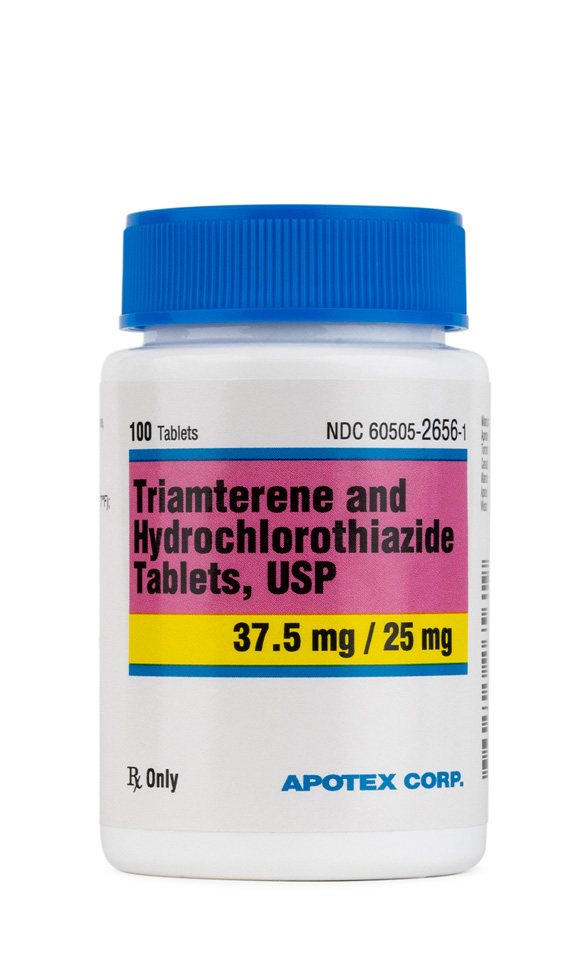
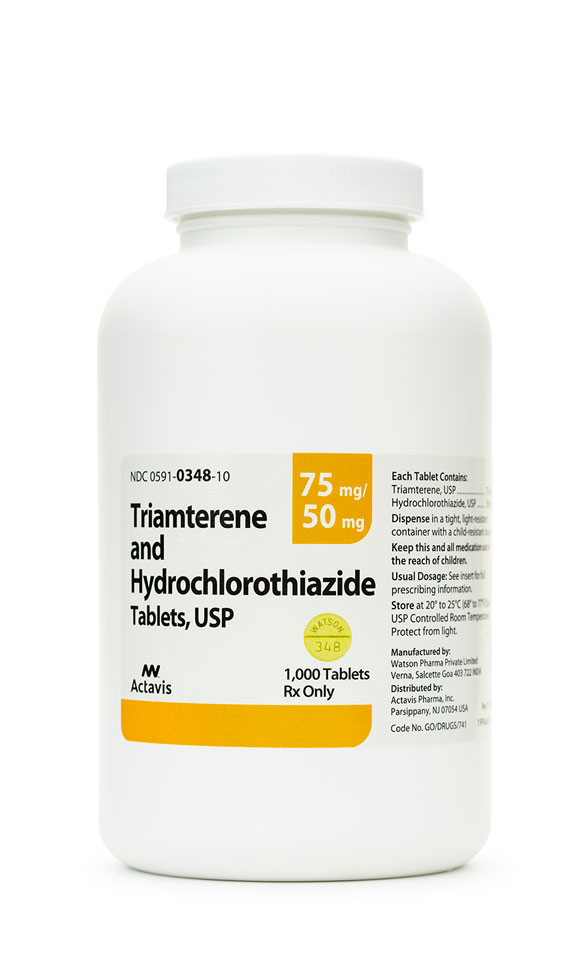
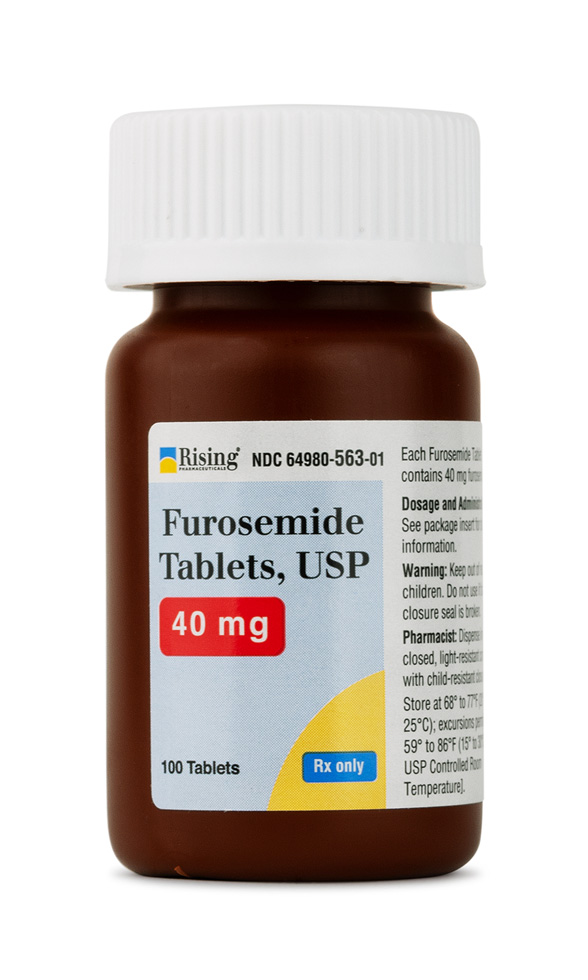 Furosemide Tablets
Furosemide Tablets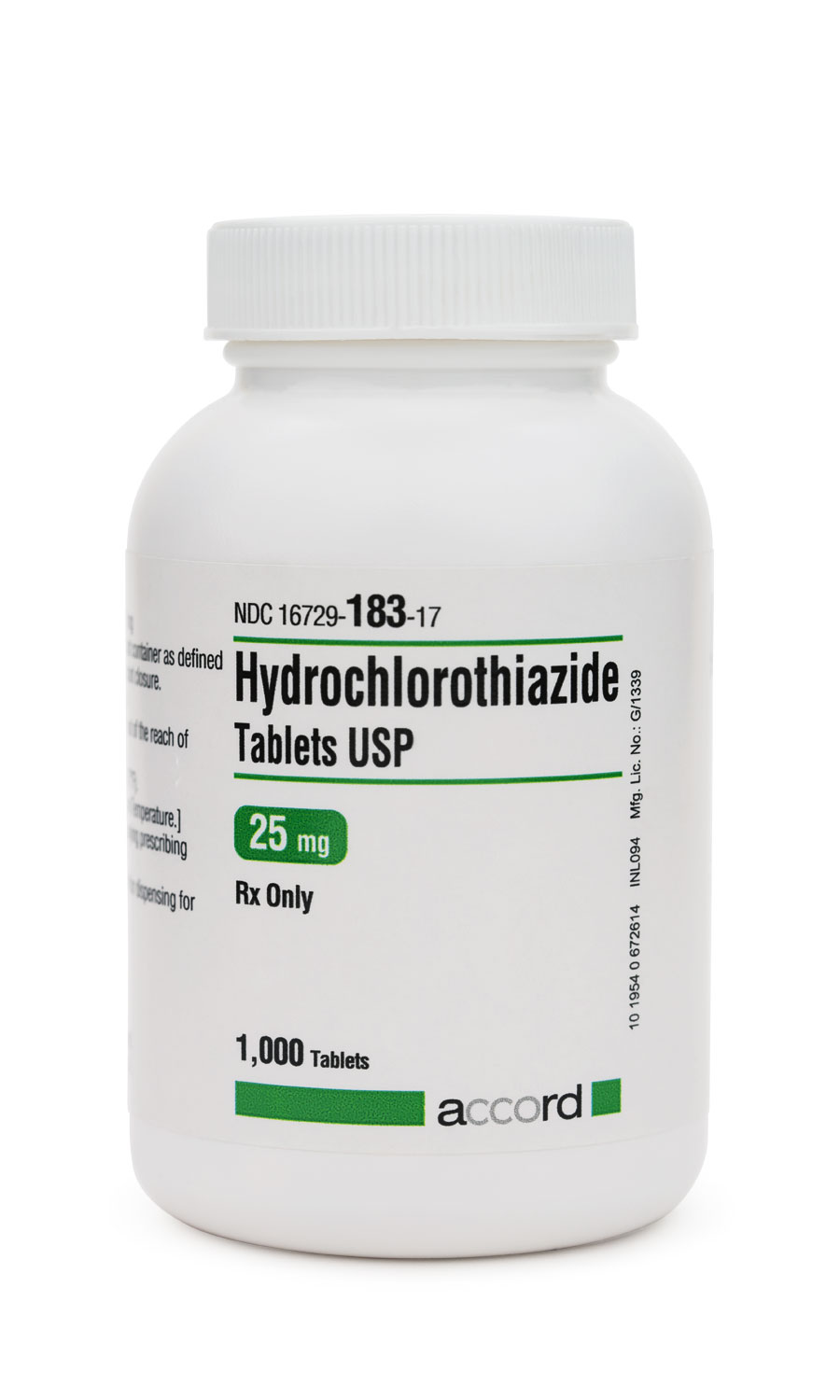 Hydrochlorothiazide Tablets
Hydrochlorothiazide Tablets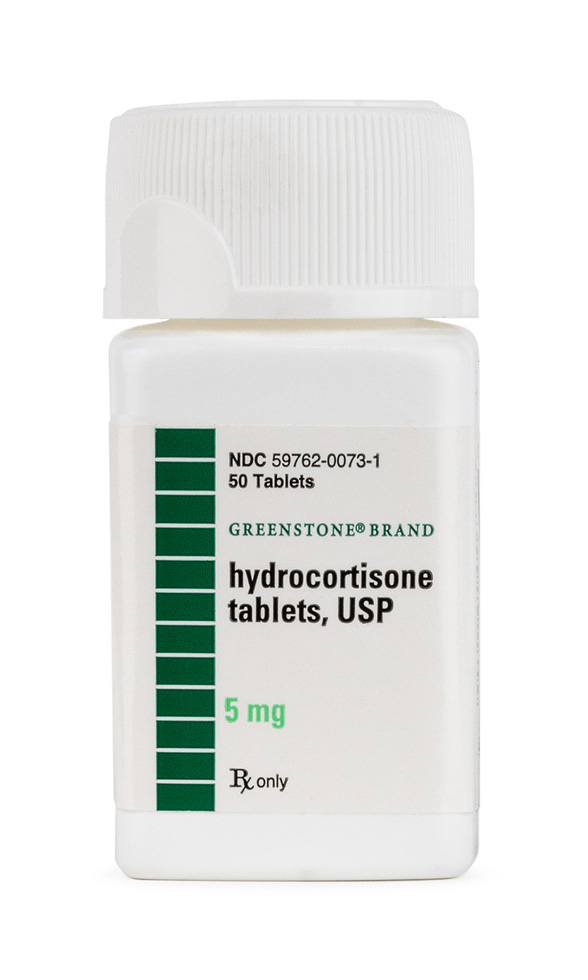 Hydrocortisone Tablets
Hydrocortisone Tablets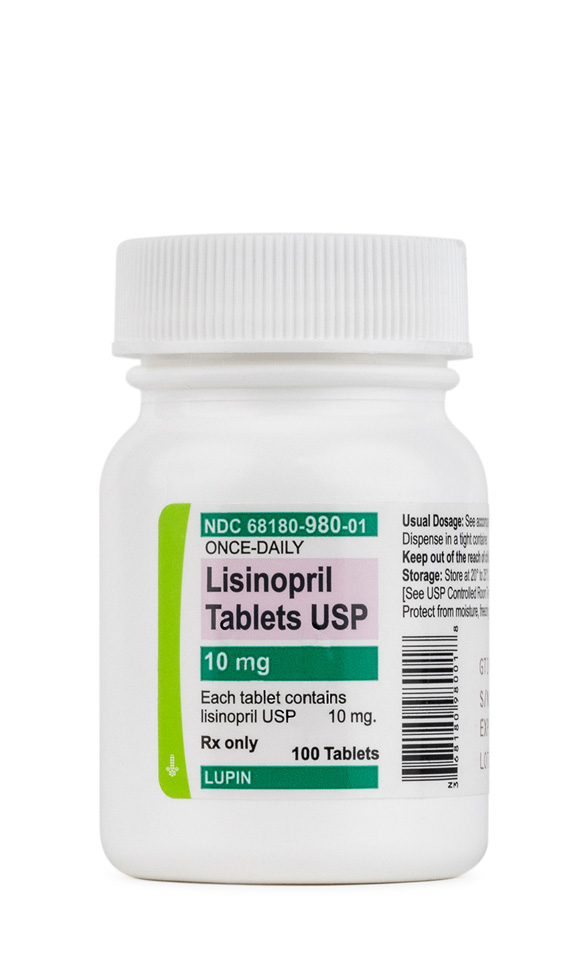 Lisinopril Tablets
Lisinopril Tablets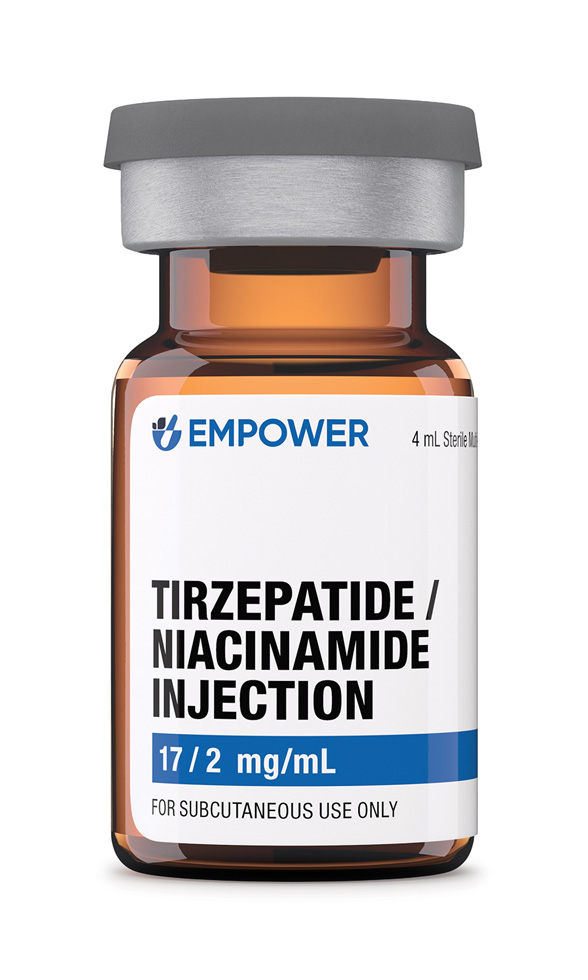 Tirzepatide / Niacinamide Injection
Tirzepatide / Niacinamide Injection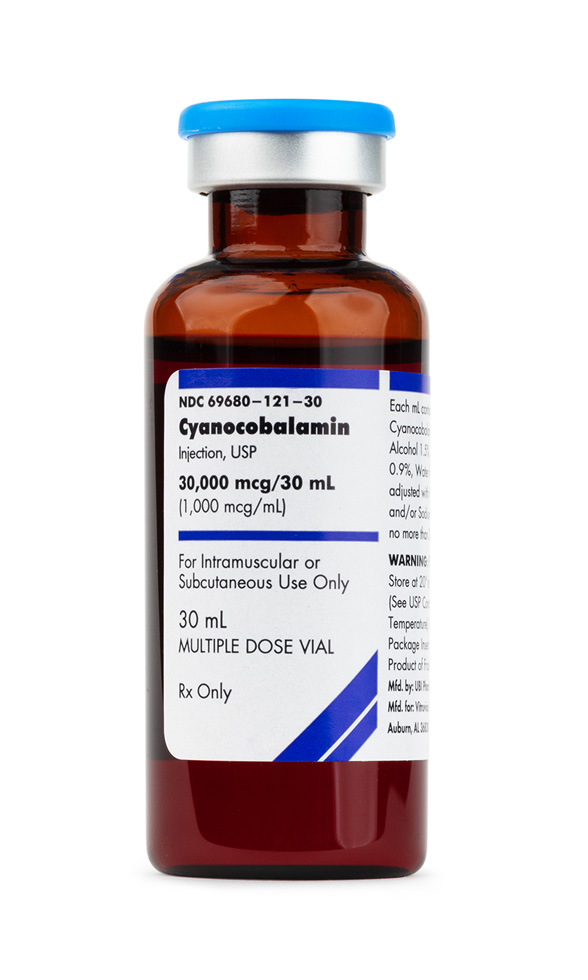 Cyanocobalamin (Vitamin B12) Injection
Cyanocobalamin (Vitamin B12) Injection